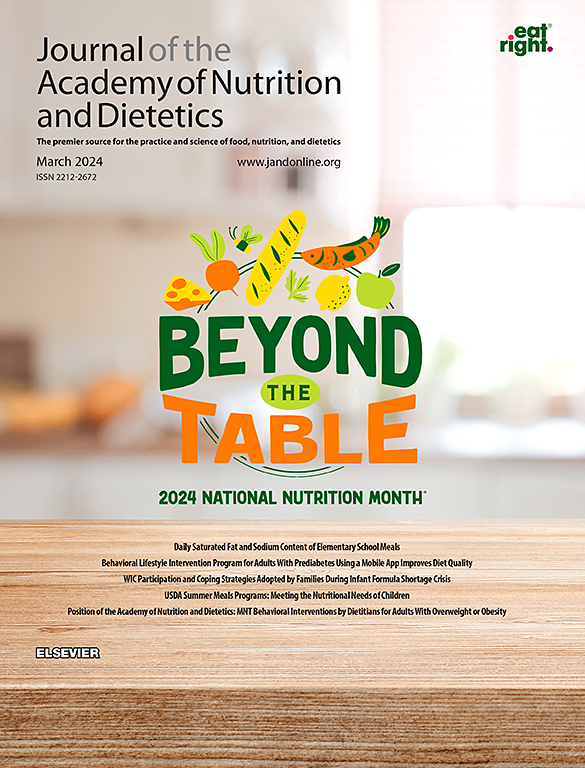2/12/2024 –
Abstract
Background
Improving social determinants of health, such as access to nutritious food, is crucial for achieving health equity. Nutrition insecurity, especially during pregnancy and postpartum, can lead to poor maternal and birth outcomes. Food is medicine (FIM) programs, which integrate food into the healthcare system to prevent or manage disease, have the potential to improve nutrition insecurity, but research about perinatal FIM programs is limited.
Objective
The purpose of this study was to explore 1) perceptions of public health impacts of perinatal food is medicine programs from the perspectives of both program implementers and program supporters and 2) implementation strategies used to enhance program adoption, implementation, and maintenance.
Design
Qualitative data were collected through semi-structured interviews. The interview guide was based on the reach, effectiveness, adoption, implementation, maintenance (RE-AIM) framework.
Participants
/setting: Program implementers (n=16) and program supporters (n=20) were recruited across the United States through purposive sampling in 2022-2023.
Analysis
Data were analyzed using deductive thematic analysis and an iterative feedback loop with the project partner.
Results
Interviews were completed with program implementers and program supporters and generated meaning units (N=1942) that were coded into themes aligned with each RE-AIM dimension. Perinatal FIM programs reached multiple priority populations who were mainly recruited through healthcare systems. Effectiveness measures typically included nutrition patterns and practices, as well as return on investment. Motivations for adopting programs primarily included partnerships and connections, financing, and policies/laws. Program components varied and were adapted to meet participants and setting needs. Policy, evidence, funding, and partnerships could lead to program maintenance. Implementation strategies applied by the program supporters included financial strategies and infrastructure changes.
Conclusions
There is a need to identify the core functions and adaptable forms of perinatal FIM programs, which could lead to identification of standard evaluation metrics. This could result in greater uptake by potential delivery agents, increased funding and policy support, and enhanced benefits for perinatal population experiencing health disparities.
Read the Full Article at Journal of the Academy of Nutrition and Dietetics






